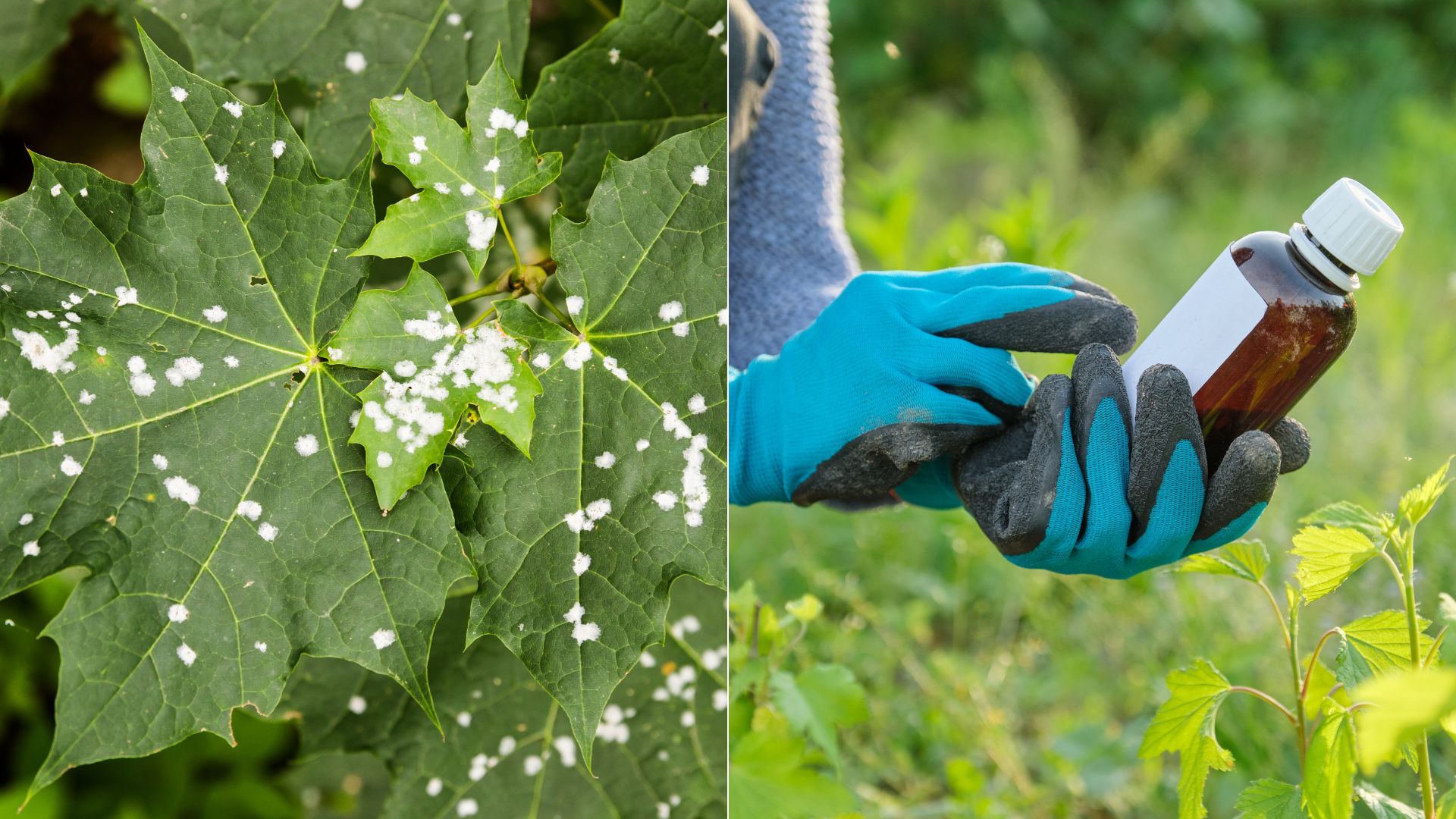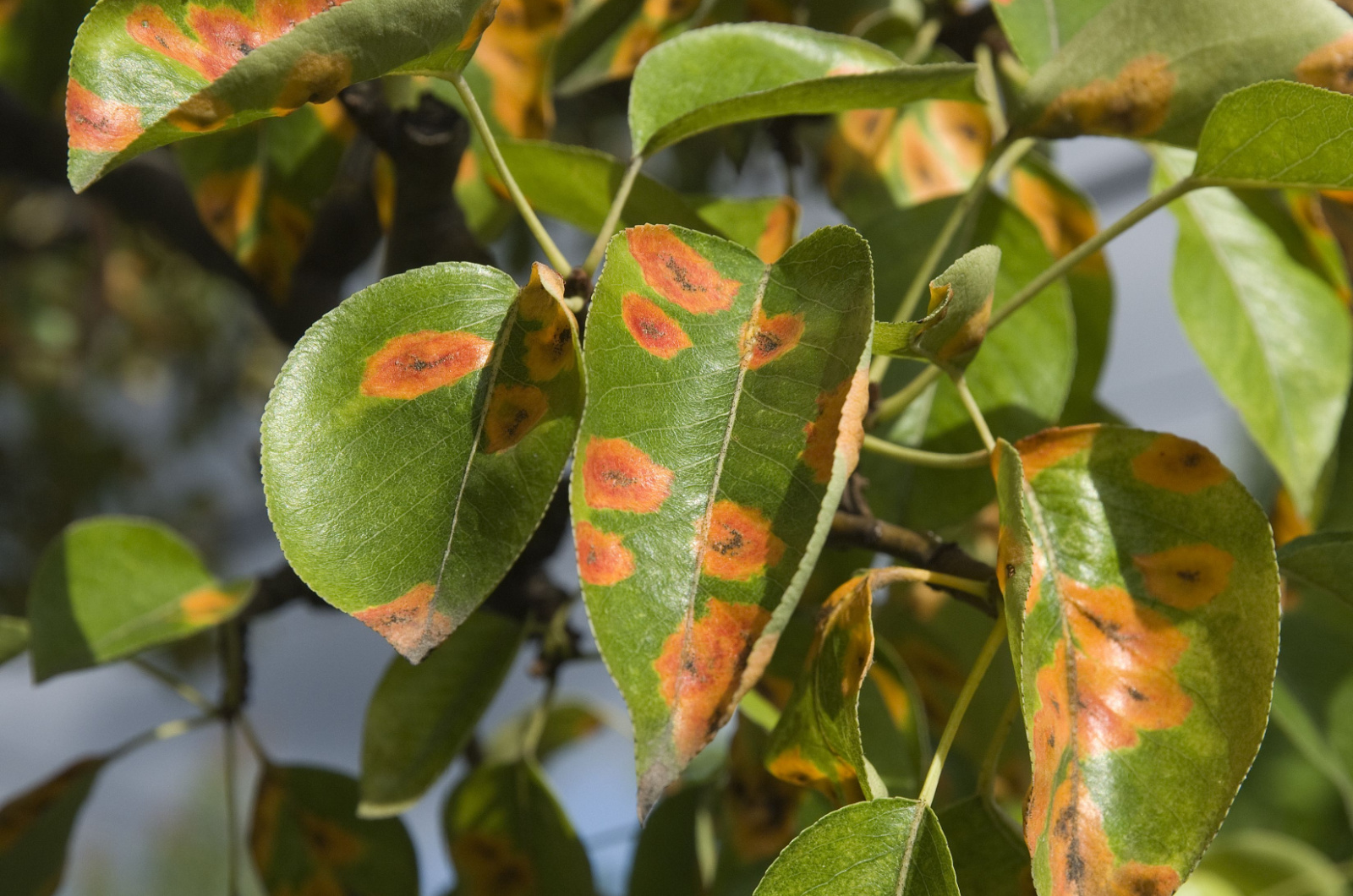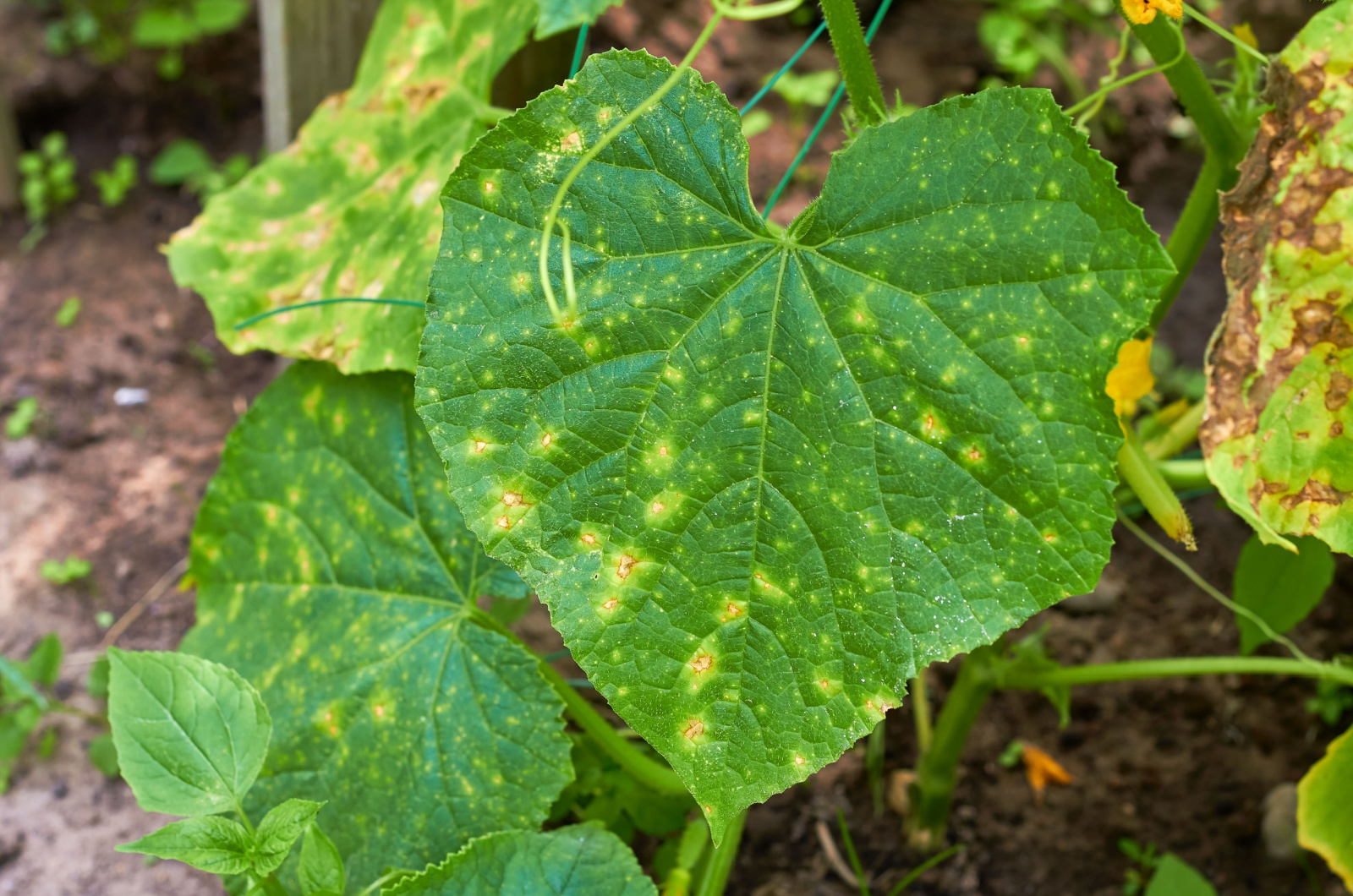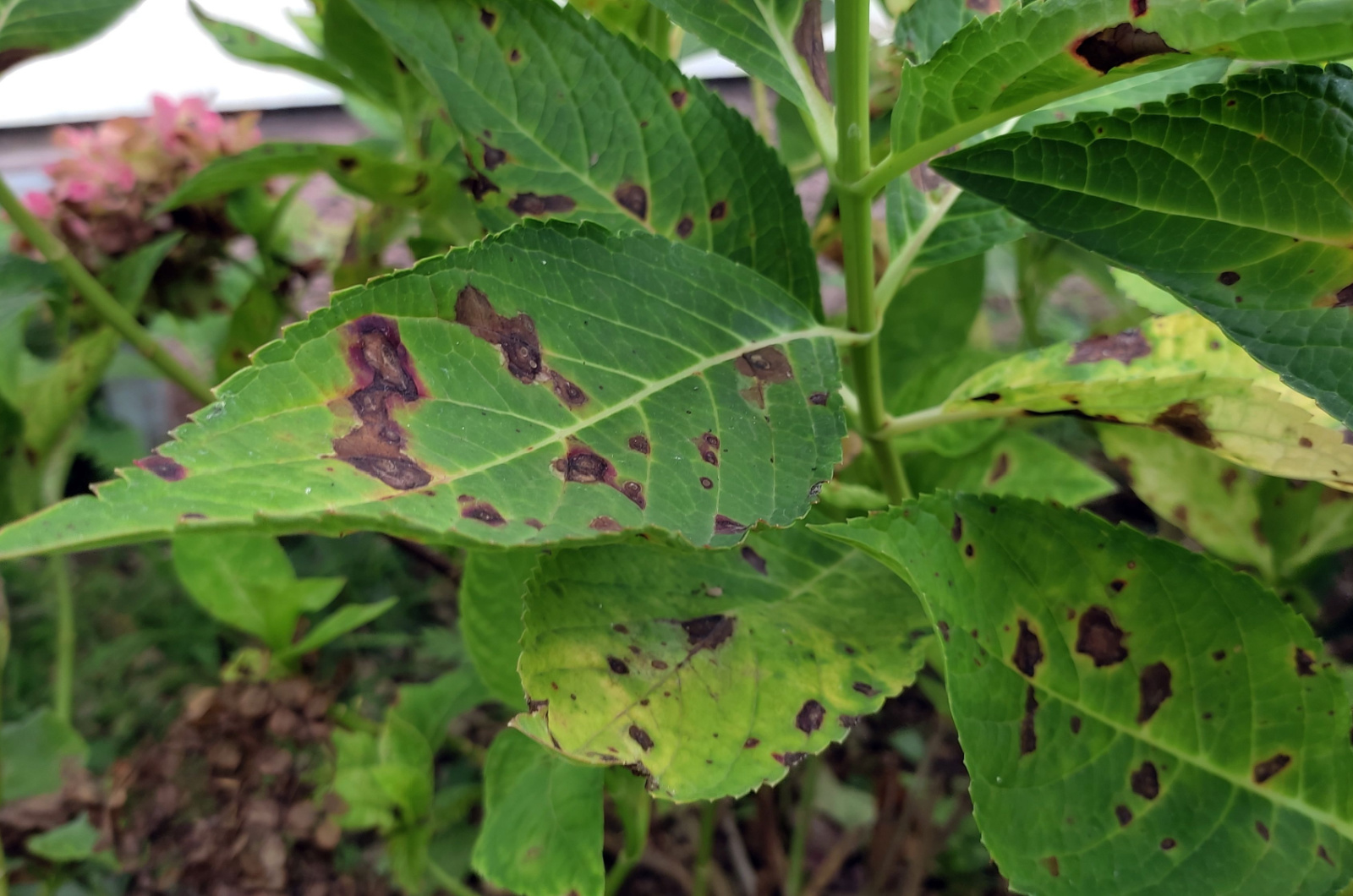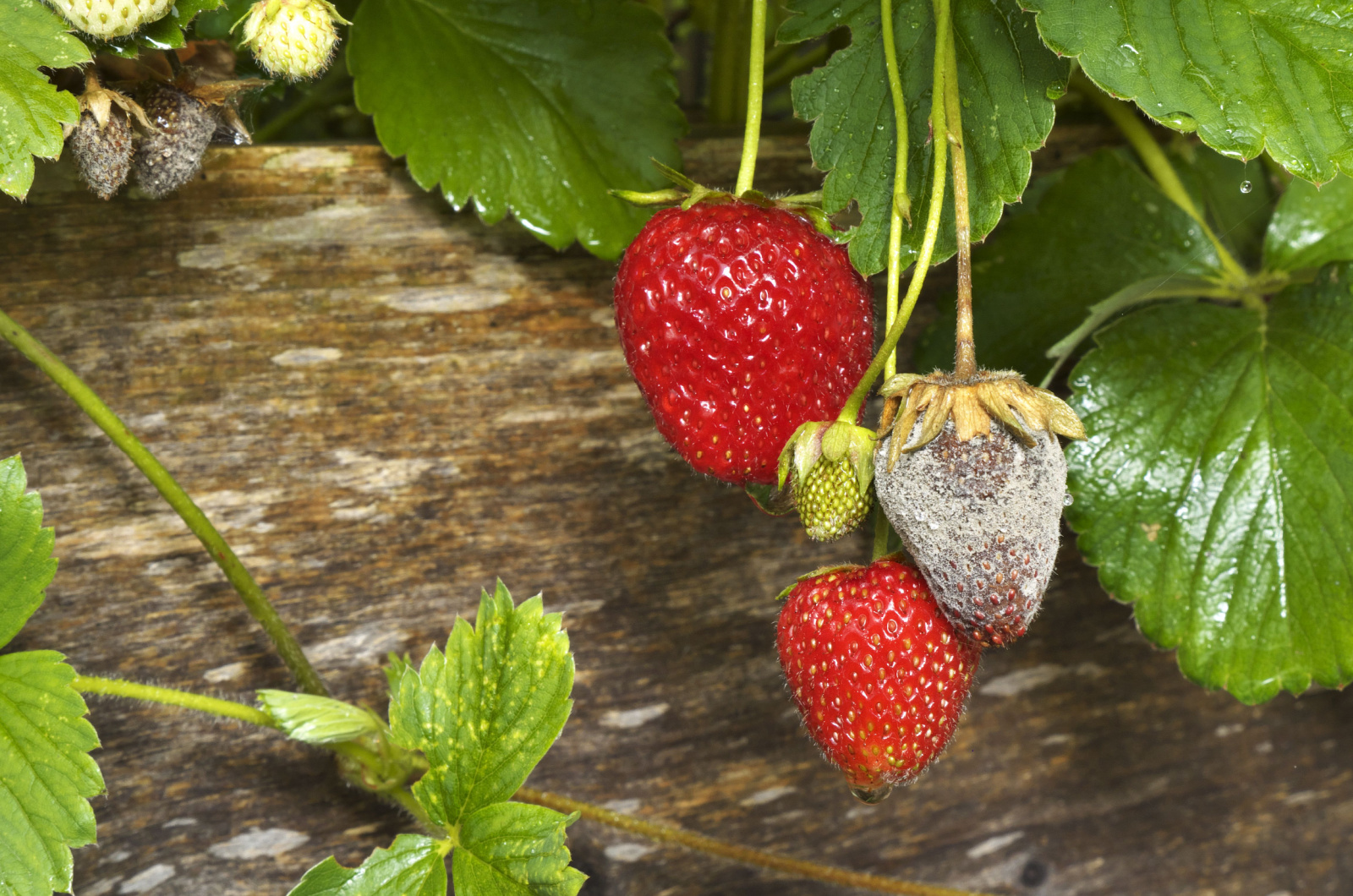All gardeners notice when there’s something wrong with their plants. Instead of rushing to the gardening shop and buying all kinds of pesticides or fungicides, you should first investigate the plant and figure out what type of disease you’re dealing with.
First, you must learn the difference between symptoms and signs. Symptoms are changes in a plant’s appearance that point to health issues, like wilting or yellowing. But symptoms alone aren’t enough to make a diagnosis.
Wilting could stem from a pathogen or other factors like drought or pests. Signs, on the other hand, are physical proof of the problem, like fungus threads or spores. These are the clues for a precise diagnosis.
In this article, we are going to explore common diseases that strike during the growing season. You will learn about their symptoms, signs, and how to manage them.
Let’s get started!
1. Rust
These fungi have large and abundant orange spores that look like rust, hence the name. They usually attack coniferous and broadleaf trees and shrubs, annuals, and perennials.
Gymnosporangium and Puccinia are the two common rust genera that are usually found in gardens. For instance, Gymnosporangium needs two hosts to complete its life cycle – those are usually a rose-family host and a juniper-family host.
This means that the spores found on junipers are transferred to the rose-family host by rain or wind, and they leave orange splotches on fruits and leaves. These blotches eventually turn into tube-shaped structures on the fruit or the undersides of the leaves.
It’s a bit different from the Puccinia genus. These fungi usually infest hollyhock, snapdragon, switchgrass, goldenrods, heucheras, sunflowers, fountain grasses, bellflowers, and reed grasses.
Those fungi that infect holly hock and snapdragons complete their life cycle on them, while other species from the Puccinia genus require two hosts. For instance, the grass host and barberry.
Signs & Symptoms
We have to distinguish between the two genera. For instance, Puccinia fungi produce orange, powdery pustules on the underside of the same leaf that correlate to yellow spots on the upper leaf surface. When touched, these spores easily spread to hands.
However, juniper rust develops gelatinous orange fruiting bodies on juniper hosts during early spring. A noticeable, spore-producing “koosh ball” structure that looks like a flower is produced by cedar-hawthorn rust.
Orange patches on upper leaf surfaces, green stems, and immature fruit are signs of rust infection on a rose-family host plant (such as an apple, pear, flowering quince, or serviceberry).
Cultural Management
For cultural management, it’s best to begin looking for resistant varieties. Figleaf hollyhock, Russian hollyhock, checkerbloom, and ‘Happy lights’ hollyhock are more resistant to hollyhock rust.
Rust-resistant snapdragons include ‘White Monarch’, ‘Wisely Golden Fleece’, and ‘Orange Glow’.
Crabapples like ‘Prairie Rose’ and ‘Bechtel’s Select’ are also resistant to rust. However, there are no reported cultivars that are resistant to cedar-quince rust. Still, you should stay away from susceptible rose-family hosts or junipers.
This will not completely eliminate the infections, but it will significantly reduce them.
Chemical Management
If rust is severe or persistent, consider using fungicides labeled for rust control. Always follow the instructions displayed on the packaging. Choose between Bonide’s Fung-onil Multi-purpose Fungicide and Spectracide Immunox.
If you are dealing with self-infecting rust like rose or hollyhock, then you should apply fungicide every 7 to 14 days.
Early spring protection with an application of Immunox, followed by an application of Fung-onil Multi-purpose Fungicide after petal fall, followed by a second application of Immunox, should significantly reduce the infection on landscape shrubs for the control of juniper rusts.
If you want to use the organic approach, consider applying neem oil or sulfur to reduce infection.
2. Downy Mildew
Downy mildew includes common diseases that affect perennials, annuals, and specific woody plants. Species from the Plasmopara genus infect sunflowers, viburnums, impatiens, and black-eyed Susan.
Species from the genus Peronospora infect roses, butterfly bushes, salvias, and bee balms. However, downy mildew can affect lots of different plants. It is the number one causative of wilting basil.
When it comes to their life cycles, these fungi produce oospores that can spend the winter in leaf litter and then germinate in early spring.
Now, the pathogens can produce spores that travel across wet leaves and soil to spread to nearby plants, or it can directly infect the plant’s roots.
Plants may give up to infection rapidly in cool, rainy weather, or they may withstand hot, dry weather before giving up when it gets cool and damp.
Signs & Symptoms
It manifests as yellow or pale green spots on the upper leaf surface, accompanied by a downy, grayish growth on the underside.
As the disease progresses, affected leaves may turn brown, curl, and eventually drop prematurely. Under moist and extremely humid conditions, sporulation frequently becomes noticeable.
Cultural Management
Adequate spacing between plants enhances air circulation, reducing humidity levels that favor downy mildew growth. Water plants at their bases and avoid getting the leaves wet. Use soaker hoses or drip irrigation.
Promptly remove and discard affected leaves to prevent the spreading of spores. The plant material at the end of the growing season should be thrown away. Also avoid overfitting plants with nitrogen because excessive succulent growth is very prone to botrytis infection.
You should also opt for plant varieties known to be resistant to downy mildew when possible. For instance, you can choose ‘Imara’ or ‘Beacon’ black-eyed Susan cultivars that are resistant to downy mildew. Avoid planting ‘Goldsturm’ cultivar.
Chemical Management
You can use Monterey AgriFos together with Bonide’s Fung-onil Multi-purpose Fungicide or Hi-Yield Captan 50W to protect your plants from downy mildew.
Unfortunately, plants that are already infected cannot be cured adequately. This is why fungicides are applied as a preventative measure.
3. Anthracnose
Several fungi cause Anthracnose. In fact, there are three genera that cause this disease: Discula, Apiognomonia, and Colletotrichum. They usually infect perennials, annuals, and woody broadleaf plants.
When it comes to their life cycles, the fungi in woody plants overwinter in diseased twigs, buds, and decaying leaf litter. Fungi spores are spread to new leaves and shoots in the spring.
The spores that infect new leaves and stems on annuals and perennials are splashed up from leaf litter that was not cleaned from the previous year.
Signs & Symptoms
These symptoms can vary among different hosts. It usually starts off as a leaf spot and then spreads in irregular shapes around leaf veins. They generally appear as irregular, dark lesions on leaves, stems, fruits, or flowers.
These lesions may have a dark border and a lighter center. As the disease progresses, the lesions may enlarge and coalesce, causing plant parts to rot and decay.
Cultural Management
Promptly remove and destroy affected plant parts, including leaves and branches, to prevent the spread of the disease. Clean up fallen plant debris and leaves to eliminate potential sources of infection.
Then, you can also opt for downy mildew resistant varieties, such as Stellar Pink dogwood, ‘Appalachian Spring’ flowering dogwood, Cornelian Cherry, ‘Liberty’ sycamore, and ‘Columbina sycamore.
Chemical Management
Growing plants under the proper lighting conditions will lessen the requirement for fungicides on smaller shrubs and perennials. It’s not recommended to use chemical management for tall trees.
Plants are effectively protected from infection during rainy weather when Spectracide Immunox, Bonide’s Fung-onil Multi-purpose Fungicide, and/or Hi-Yield Captan 50W Fungicide are used in rotation
Often, applications must start at budbreak and last until the weather turns hot and dry or the terminal buds on woody plants form.
4. Botrytis Blight
Botrytis blight, otherwise known as gray mold, is a common disease that is found in perennials, some woody plants, and annuals.
Numerous fungi species can be found in the garden, including Botrytis paeoniae that infects peonies, Botrytis elliptica that infects gladiolus, and Botrytis cinerea, which has plenty of hosts.
Fungi usually overwinter in the garden and then generate spores in the early spring. Infected plant components include buds, blooms, new shoots, leaves, and damaged plant parts. To germinate and infect plants, spores need moist leaves.
Signs & Symptoms
It manifests as fuzzy gray or brown patches on leaves, flowers, or fruits. These patches may spread quickly, covering affected parts in a fuzzy, mold-like growth.
As the disease progresses, the affected plant tissues may rot and become mushy. Sometimes black flakes or balls of fungus can appear in infected areas – these are referred to as sclerotia.
Cultural Management
Make sure that there is adequate spacing between plants for good air circulation, which reduces humidity that promotes disease development. Get rid of dead or broken flowers and leaves to prevent spreading.
Avoid excessive application of nitrogen-containing fertilizers. Opt for resistant varieties such as these peony cultivars: ‘White Cap’, ‘Buckeye Belle’, ‘Scarlet O’Hara’, and ‘Old Faithful.
Resistant petunia cultivars include ‘Tidal Wave Hot Pink’ and ‘Fantasy Blue’.
You should also use mulch to prevent soil-borne spores from splashing onto plants during watering.
Chemical Management
If Botrytis blight is problematic, consider using fungicides labeled for its control. For these types of issues, you can consider Hi-Yield Captan 50W or Fung-onil Multi-Purpose Fungicide.
You can opt for a more organic fungicide such as Bonide’s Revitalize Biofungicide, although it doesn’t perform as well as Fung-onil or Captan.
Still, all of these fungicides should be applied as preventative measures. When conditions are conducive for disease, they will need to be used every 7 to 10 days to protect tissue adequately.

